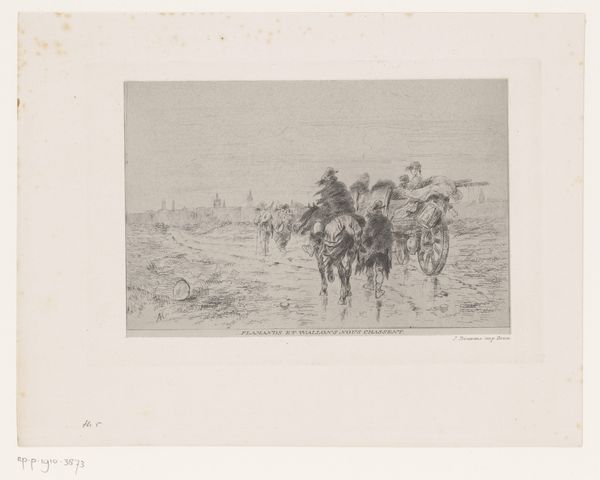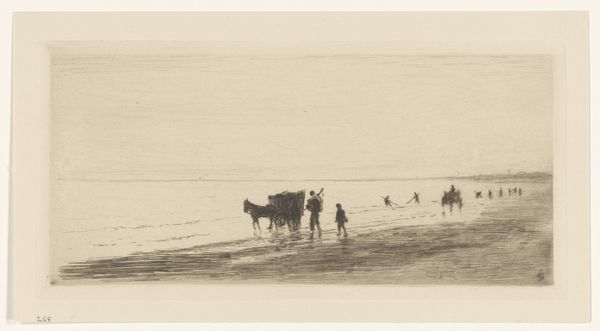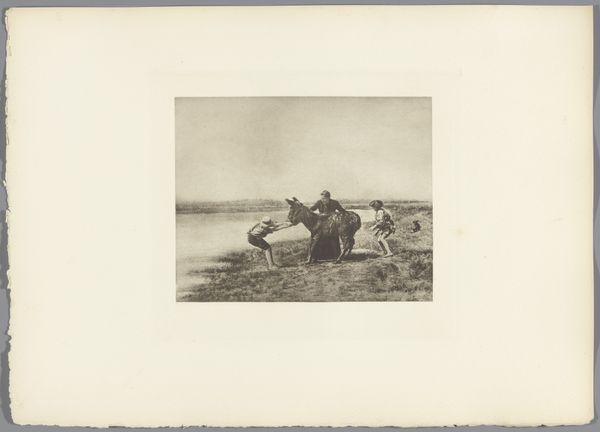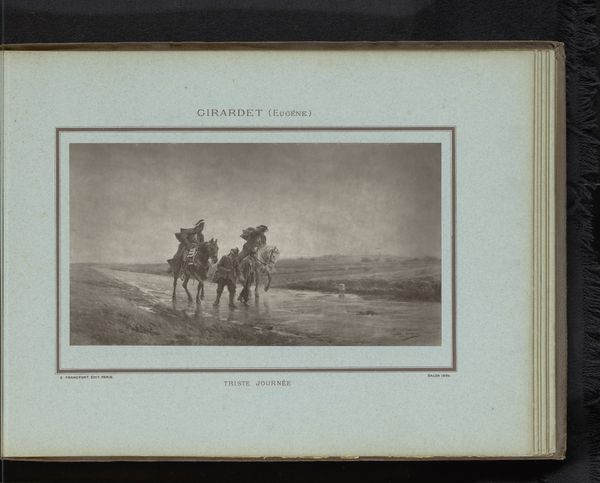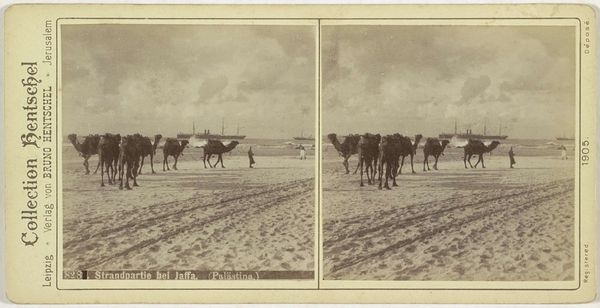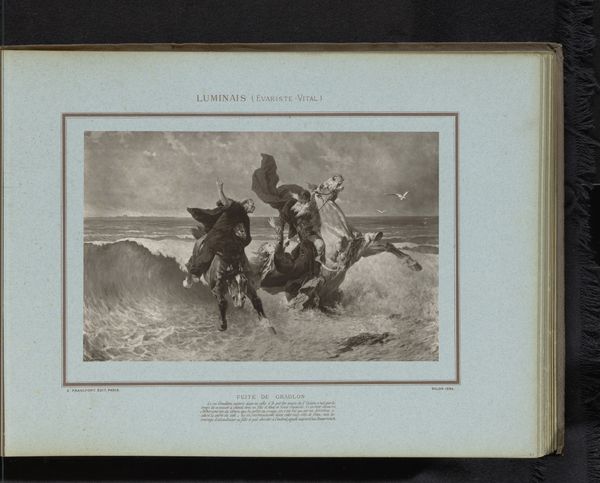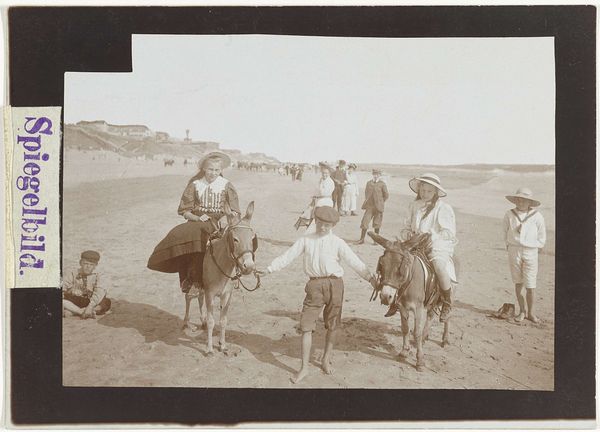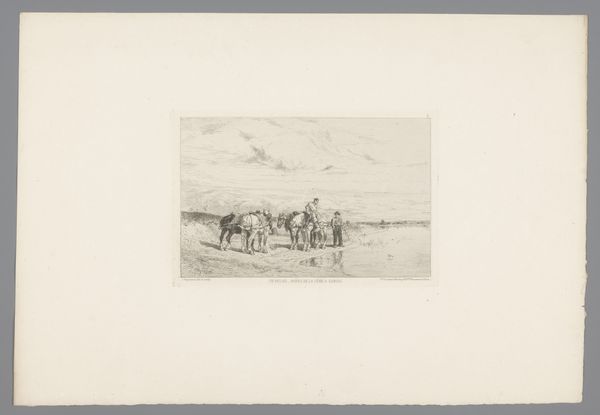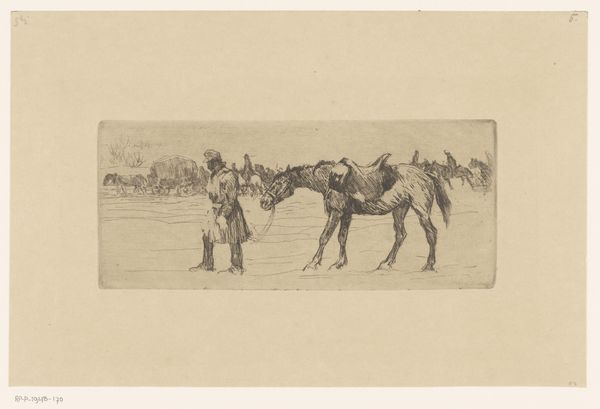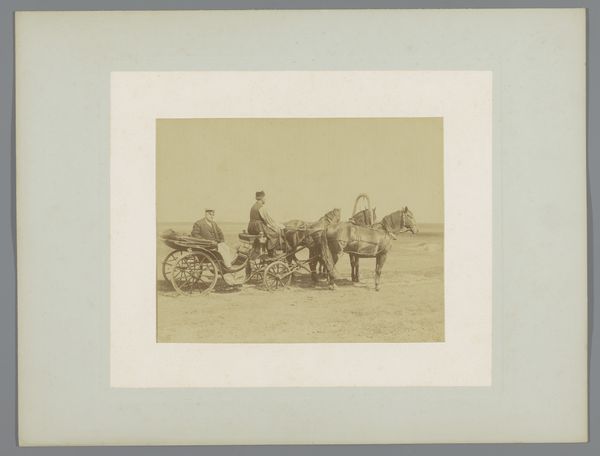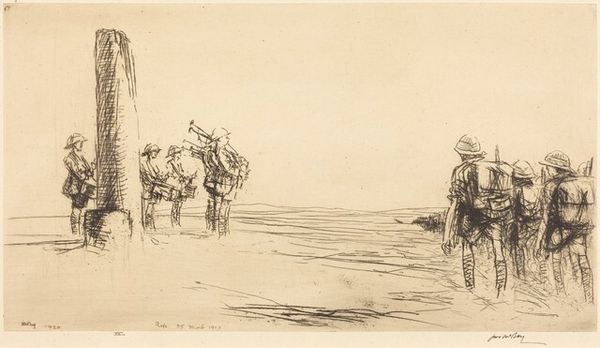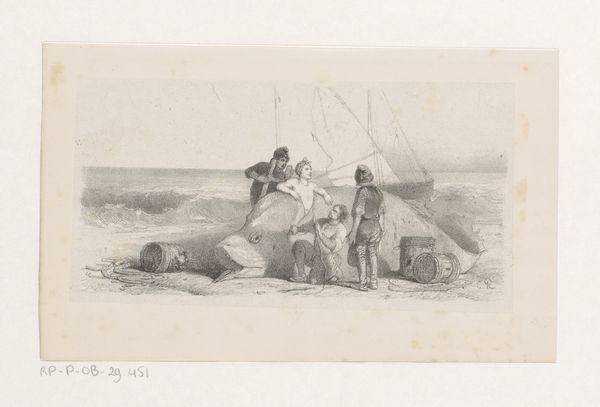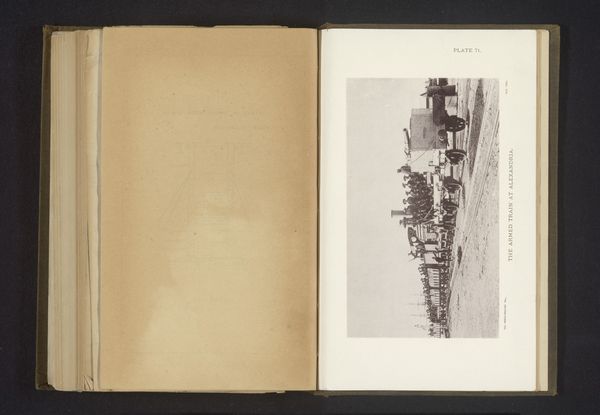
Reproductie van een schilderij van vluchtende mensen op het strand door Charles Edouard Delort before 1901
0:00
0:00
Dimensions: height 323 mm, width 465 mm
Copyright: Rijks Museum: Open Domain
Curator: What an interesting print. Before 1901, Charles Edouard Delort created this piece titled, "Reproductie van een schilderij van vluchtende mensen op het strand," depicting figures in what appears to be a hasty departure on a beach. Editor: My first thought is how unsettling this image is. The limited color palette and rather sparse composition amplify the stark, somewhat desperate, mood. The people seem stranded, or escaping something. Curator: Let’s consider the material itself: engraving on paper. This implies mass production, and raises questions of accessibility: for whom was this image made, and what narratives surrounding the flight or displacement, visible within this genre painting, did it propagate? The labor involved in creating the printing plate itself, carefully etched line by line, also demands respect and acknowledgment. Editor: From a formal perspective, note the linear emphasis and tonal gradations. The artist uses line work to create a sense of depth, guiding our eye along the shore. The balance between the crowded coach on the left, versus the single rider to the right, is striking. This division enhances the visual tension. I read it almost symbolically—individuals against collective flight. Curator: And isn't that tension beautifully mirrored by the landscape itself? The turbulent sky seems to press down upon the vulnerable figures on the exposed shoreline, creating an atmosphere of precarity. Where are they going? What forces them from their homes? We only get to witness their transit, caught in the in-between spaces of land and water. We are only seeing them consume the means of transit; the carriage, the horses... Editor: The texture created by the engraving technique certainly adds to that feeling, it almost feels like weather, this very visual rendition. Even though this image can come across as simple on its surface, there’s such visual depth created through lines, which almost tricks the eye. Curator: Absolutely, seeing Delort’s work displayed like this urges me to explore the relationship between Romanticism and Realism at that time, considering socio-political currents, industrial developments in art production, and consumerism which determined which images gained circulation and popularity in late 19th-century society. Editor: Looking again at the image, I notice the horse rider waving his hat; possibly goodbye to somebody unseen; possibly an acknowledgment that despite the chaos, people must acknowledge their history while trying to embrace the unknown future. Curator: Well put! The way that mass-produced imagery allowed for distribution of particular ideological views is especially visible when examining what is omitted or favored within artworks that appear as “a simple illustration".
Comments
No comments
Be the first to comment and join the conversation on the ultimate creative platform.
